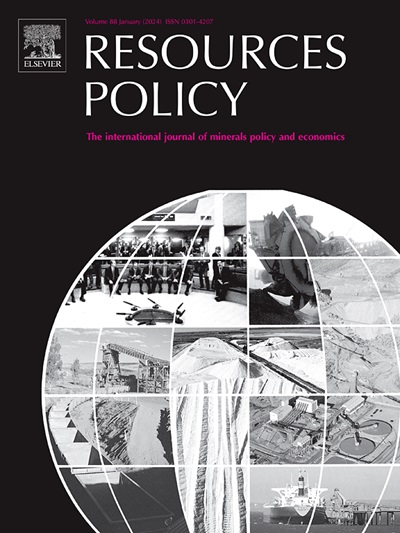Multi-scenario land use simulation for fast human growth regions: A case study of Zambia's Solwezi mining district
IF 10.2
2区 经济学
0 ENVIRONMENTAL STUDIES
引用次数: 0
Abstract
Mining operations in developing countries drive rapid land-use changes, with significant socio-economic and environmental impacts. This study analyses future land-use dynamics in Zambia's Solwezi District from 2022 to 2050, applying the Patch-generating Land Use Simulation (PLUS) model across four scenarios: sustainable development (S1), business-as-usual (S2), fast development (S3), and unrestricted development (S4). Results highlight contrasting outcomes. S4, characterised by minimal regulatory oversight, leads to forest loss exceeding 1000 km2, urban area expansion by 200 km2, and mining growth of 85 km2, illustrating the ecological risks of unchecked development. In comparison, S3 projects forest loss of 914 km2, urban growth of 170 km2, and mining expansion of 45 km2, while S2 predicts forest loss of 753 km2, urban growth of 150 km2, and mining expansion of 38 km2. S1 reflects a balanced growth model with forest loss limited to 631 km2, urban growth of 120 km2, and mining expansion constrained to 30 km2, demonstrating the feasibility of harmonising economic development with ecological preservation through robust land management. Findings emphasize the critical role of land use planning in mitigating the negative impacts of mining and urban expansion. S1 provides a viable pathway for sustainable development, aligning with global sustainability targets by limiting the conversion of ecologically sensitive areas. S2 and S3 indicate a gradual erosion of ecosystem services, while S4 highlights the severe consequences of unregulated growth, including environmental degradation, pollution, and social challenges. These results highlight the need for strong governance frameworks to manage land use and promote sustainable development in mining regions.
人口快速增长地区的多场景土地利用模拟:以赞比亚索尔韦齐矿区为例
发展中国家的采矿业务推动土地使用迅速变化,产生重大的社会经济和环境影响。本研究运用斑块生成土地利用模拟(PLUS)模型,分析了2022年至2050年赞比亚索尔韦齐地区未来土地利用动态,涵盖四种情景:可持续发展(S1)、一切照常(S2)、快速发展(S3)和无限制发展(S4)。结果突出了对比结果。以最小监管为特征的S4导致森林损失超过1000平方公里,城市面积扩大200平方公里,采矿面积增加85平方公里,说明了不受控制的发展所带来的生态风险。相比之下,S3预测森林损失914平方公里,城市增长170平方公里,矿业扩张45平方公里,而S2预测森林损失753平方公里,城市增长150平方公里,矿业扩张38平方公里。S1反映了一个平衡的增长模型,森林损失限制在631平方公里,城市增长限制在120平方公里,采矿扩张限制在30平方公里,表明通过稳健的土地管理协调经济发展与生态保护的可行性。研究结果强调了土地利用规划在减轻采矿和城市扩张的负面影响方面的关键作用。S1为可持续发展提供了一条可行的途径,通过限制生态敏感地区的转换,与全球可持续发展目标保持一致。S2和S3表明生态系统服务功能逐渐受到侵蚀,而S4强调了不受管制的增长的严重后果,包括环境退化、污染和社会挑战。这些结果突出表明,需要建立强有力的治理框架来管理矿区的土地使用和促进可持续发展。
本文章由计算机程序翻译,如有差异,请以英文原文为准。
求助全文
约1分钟内获得全文
求助全文
来源期刊

Resources Policy
ENVIRONMENTAL STUDIES-
CiteScore
13.40
自引率
23.50%
发文量
602
审稿时长
69 days
期刊介绍:
Resources Policy is an international journal focused on the economics and policy aspects of mineral and fossil fuel extraction, production, and utilization. It targets individuals in academia, government, and industry. The journal seeks original research submissions analyzing public policy, economics, social science, geography, and finance in the fields of mining, non-fuel minerals, energy minerals, fossil fuels, and metals. Mineral economics topics covered include mineral market analysis, price analysis, project evaluation, mining and sustainable development, mineral resource rents, resource curse, mineral wealth and corruption, mineral taxation and regulation, strategic minerals and their supply, and the impact of mineral development on local communities and indigenous populations. The journal specifically excludes papers with agriculture, forestry, or fisheries as their primary focus.
 求助内容:
求助内容: 应助结果提醒方式:
应助结果提醒方式:


